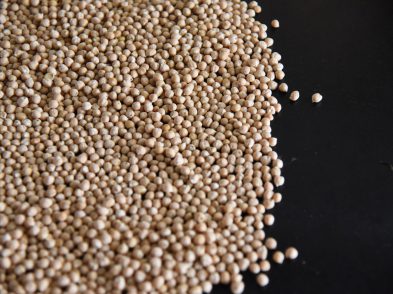Like so many other transplanted artisans in Florence, Tess Blondel has cultivated her skills in one of the world capitals of craftsmanship. While living and working in Tuscany for more than 20 years, Blondel has carved out a niche for herself in a particularly fascinating artistic field: silk marbling.
Blondel’s craft stems from an ancient Chinese technique that involves recreating the wave- and vein-like patterns of marble on textiles. She discovered this art form by chance while visiting Colorado College with her husband, who was there on business. Having studied art, Blondel spent an afternoon wandering through the halls of the art building, where she came across a group of students experimenting with the intriguing technique. Their instructor, Janne Steiner, encouraged the eager Blondel to join them and give it a try, and she was immediately struck by the gorgeous decorations and optical effects that the technique created. She began traveling to Colorado regularly to learn from Steiner.
Combining her new interest in the technique with her knowledge of woodcut and other art forms, Blondel began crafting original accessories. Scarves and stoles are among her trademark pieces, and she achieves a unique patchwork aesthetic by weaving together the finest Chinese silks and multicolored Indian fabrics.
To give the textiles their magnificent ‘marbled’ effect, Blondel fills a tall tray with water to which chemicals have been added. As she pours in the colors, a chemical reaction occurs that cause them to float up to the surface. Next, she places silk, cotton or linen atop the water, absorbing the colors, often creating a sumptuous swirling effect. Occasionally, her pieces contain abstract patterns that seem to occur almost magically, as if on their own, but more often than not she manipulates the colors to create her distinctive designs. Experimenting with the dyes is a delicate operation: the chemical solutions are temperamental and tricky, so the work requires a great deal of patience, trial and error.
Although her intricate pieces can be found in countless boutiques, Blondel prefers to establish direct contact with individual customers. Giving each of her clients a singular, personalized piece is her priority. Maintaining this direct-contact approach, she has participated 16 separate times in Artigianato e Palazzo, the annual exhibition dedicated to Italy’s finest artisans. This year, the event in the Corsini Gardens celebrates 20 years and takes place May 15 to 18, offering those who attend an opportunity interact with Blondel and other artisans wholeheartedly dedicated to their crafts.
This article is published in collaboration with Artigianato e Palazzo www.artigianatoepalazzo.it.







